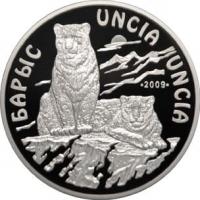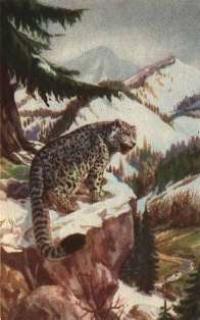Вы здесь
Fauna of Sairam-Ugam park.


Ecological tours to Sairam-Ugam park.
“Nature can lead you to peace and quiet. This is her gift to you. When you perceive nature and connect with it in this field of silence, then your awareness begins to permeate this field. This is your gift to nature"
Eckhart Tolle.
Botanical tours to Sairam-Ugam park.
59 parts of mammals inhabit the Kazakhstani part of the Western Tien-Shan (Mammals of Kazakhstan, 1969-1985; Book of the genetic fund of the fauna of the Kazakh SSR, 1989; Monitoring of biological diversity of the Aksu-Dzhabagly reserve, 2002).
Of this number, belong to the order of Rodents - 22 species, Bats - 14, Predatory - 14, Artiodactyls - 5, Insectivores - 2, Hare - 2 species The studied region belongs to the West Tien Shan zoogeographic area, one of 22 identified in Kazakhstan (Afanasyev, 1960).
Representatives of the desert fauna (15 species), forest (11) and species widespread in the Palearctic (10) predominate from the class of mammals in the region, then mesophilic species of southern countries (8) come, mountain species - inhabitants of rocky biotopes (5) and mountain steppes (3); Representatives of the steppe fauna (1) and acclimatized (1) close the list.
Of the economically important mammalian species in the region, fox (Vulpesvulpes), corsac (Vulpescorsac), wolf (Canislupus), jackal (Canisaureus), ermine (Mustelaerminea), weasel (Mustelanivalis), steppe polecat (Mustelaeversmanni), badger (Melesmeles) live in the region cat (Felislybica), long-tailed marmot (Marmotacaudata), yellow ground squirrel (Sperimophilusfulvus), muskrat (Ondatrazibethica), tolai hare (Lepustolai).
In the recent past, these species of animals were objects of the fur trade, which now has largely lost its former role. Among ungulates, the objects of amateur hunting (under licenses) are the mountain goat (Coprasibirica), Siberian roe deer (Capreoluspygargus) and wild boar (Susscrofa).
In the Red Book of Kazakhstan (1996) from among the mammals of the region 10 species are listed. Of the 34 species of mammals selected as indicator for the Western Tien Shan, 31 live in its Kazakhstani part (without Karatau). There are no relic gophers, a red-tailed gerbil, and Karatau argali.
The distribution of some of the indicator species covers only individual ranges of the Western Tien-Shan. So, Tien-Shan argali lives only in Talas Alatau, the marmot of Menzbir only in Karzhantau and the Ugam ridge; long-tailed marmot - in Talas, Ugam and Maydantal ranges and is absent in Karzhantau.
The maximum number of species was noted in Talas Alatau, which is primarily due to the presence of a reserve here and the better preservation of natural complexes. Assessing the conservation of the fauna of mammals in comparison with the earlier period (Shulpin, 1948; Korelov, 1956; Kovshar, Yanushko, 1965; Kapitonov, 1969; Grachev, 1981 and others), we can state that there are special changes in terms of as a whole for the region did not happen and the number of species remained the same.
On some ridges, however, there are some changes; they relate mainly to large (hunting) animals. For example, the Tyanshansky argali and, apparently, the snow leopard that lived here earlier are no longer found in Karzhantau (Kapitonov, Lobachev, 1977; Grachev, Fedosenko, 1977).
The lower boundary of the distribution of the Menzbir marmot in Karzhantau (the Badam basin) shifted from 2100 m in 1973 to 2390 m in 2003. Changes in the number of animals, which also occurred mainly in species that are objects, are more noticeable in the region hunting, including poaching.
Over the past decade, the numbers of wild boar, roe deer, argali, mountain goat, snow leopard, Tien Shan bear, groundhog Menzbir, long-tailed groundhog, and wild-type have declined. Synanthropic species (whose life is closely connected with cultural landscapes or directly with human household buildings) from rodents in the region include primarily house mouse (Musmisculus), forest mouse (Apodemussylvaticus) and Turkestan rat (Rattusturkestanicus).
These animals live in basements of houses, warehouses, barns constantly or in separate seasons depending on the availability of feed. When cereals or fruit crops ripen, they migrate to the fields or to gardens, gardens and often return to the farm buildings for the winter.
Typical synanthropes of the bats in the region are net pyrrhid dwarf (Pipistrelluspipistrellus), late skin (Eptesicusserotinus), red-toned night-bearer (Nyctalusnoetula), to a lesser extent, mustachioed night-eater (Myotismystacinus), and sharp-eared bicorniformes (Myotismystacinus) and myotis tomiformes (Myotism turtius) and ) Bats use attics of rooms, wells, tunnels, etc. as shelters, both winter and summer, sometimes settling in large colonies.
Authority:
http://www.sugnpp.kz
Photos
Alexander Petrov.







